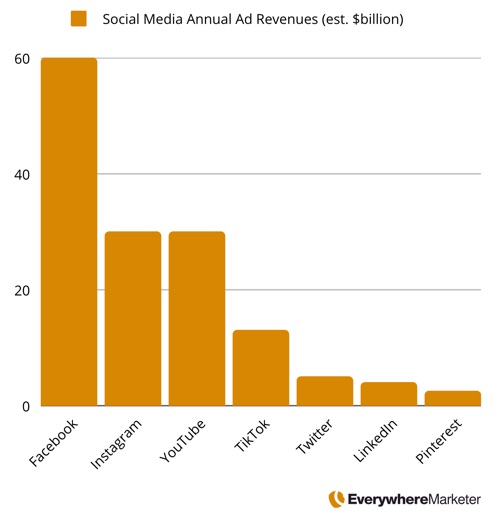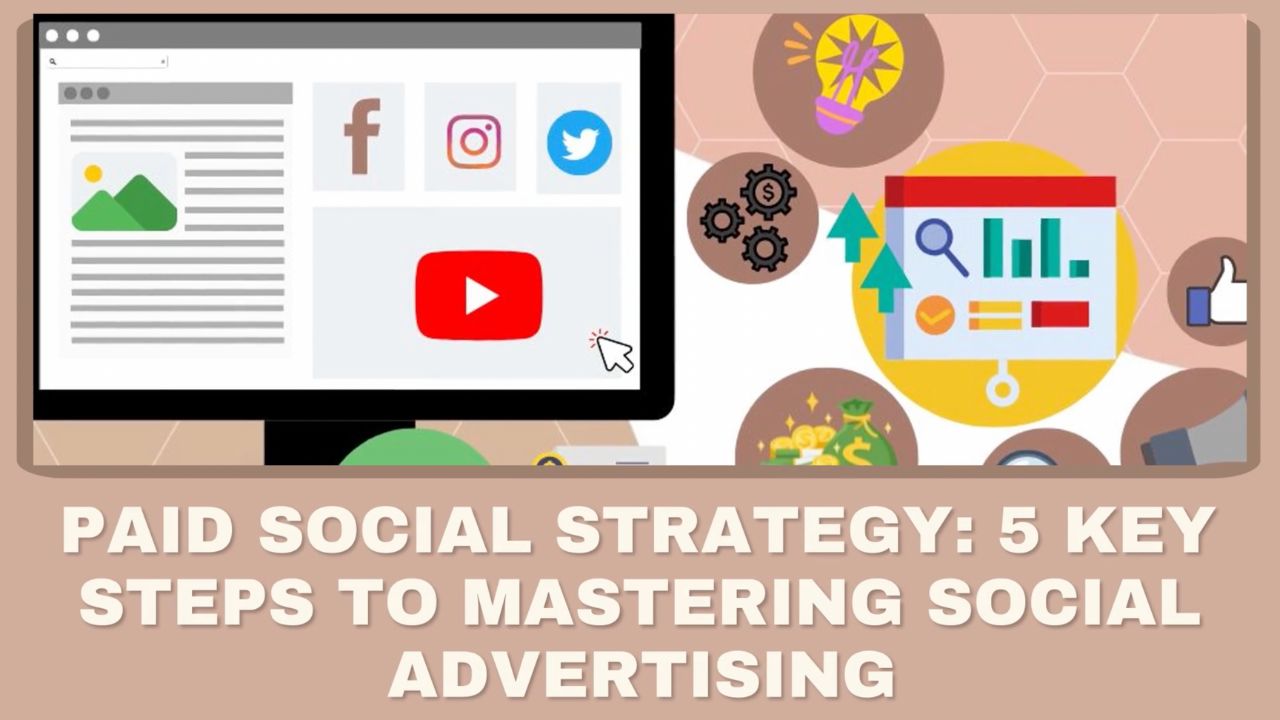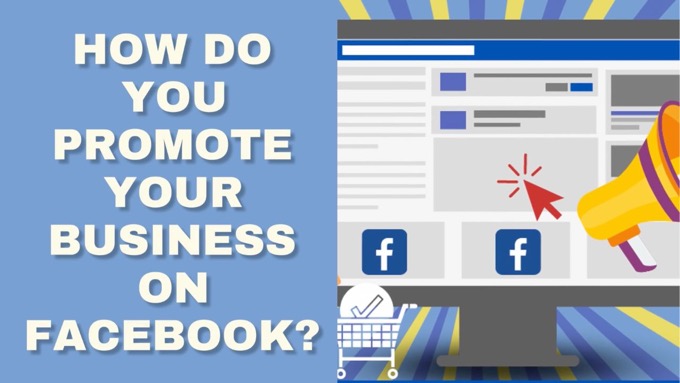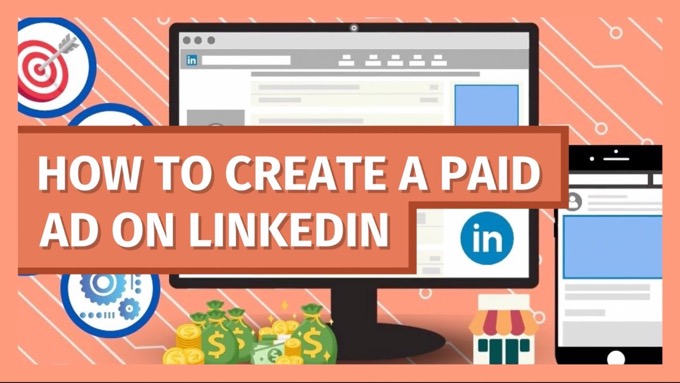Having a paid social strategy is practically essential to achieve business growth.
In fact, hundreds of billions of dollars are spent every year on social media advertising.
But making your expenditure on social ads profitable can be challenging.
(In fact, it’s reasonable to assume a good proportion of campaigns are not protitable at all.)
So how can you create a paid social strategy that works?
This post gives you 5 key steps for mastering social advertising, giving you the best chance of:
- Creating a profitable campaign
- Successfully scaling through social media advertising.
But first, a bit of background…
A Brief History of Social Advertising
Before the advent of social media ads, online advertising largely consisted of using Google Ads (which was called Google AdWords back then), solely on search to start with, or, from 2005, on their display network.
Although Facebook sold some initial ad space from 2004 onwards, it wasn’t done to any scale until the Facebook Ads platform launched in 2007.
The first ads were also appearing on LinkedIn from as early as 2005, on YouTube from 2007, and on Twitter (now X) from 2010.
Ad revenues on these platforms are now in the billions, if not tens of billions, of dollars.
To grow a business to any scale, paid social media is practically essential. But making it work also means using an effective paid social strategy.Click To Post OnFor Facebook alone (so not including other Meta properties), revenues have grown from $153 million in 2007, to around $60 billion in 2021, much of which has come through selling ads.

While Facebook is by far the biggest, in terms of other platforms:
- Instagram—around $30 billion…
- YouTube—approaching a similar $30 billion…
- TikTok—around $13 billion…
- X—approaching $5 billion...
- LinkedIn—around $4 billion…
- Pinterest—$2.5 billion.
All are expected to continue to climb steeply over the next few years.
Why Should You Use Social Media Advertising?
(Almost) Unlimited Scale
Based on data from October 2022, well over half (59.3%) of the entire global population now use social media.
But of course, not everyone around the world has proper (or even any) access to the internet.
But for developed countries like the US, UK, Canada and Australia, and countries in the EU, over 90% of the population are online.
So out of everyone who has internet access, what proportion are on social media?
Around 9 out of 10 of them.
Social media advertising gives you (almost) unlimited scale, invaluable targeting, instant visibility, transformative data, and above all... it's where your market lives!Click To Post OnIn other words, for the majority of businesses, they can use social media advertising to reach practically everyone in their market.
That’s almost unlimited scale!
But of course it depends on having:
- One or more campaigns that are profitable—and as we’ll see, it takes both time and patience to reach profitability…
- The available budget to finance the ads—this is easier for businesses where customer value is realized relatively quickly, enabling them to quickly recoup the cost of the ads, but more challenging for businesses that have longer sales cycles or longer periods over which customer value is realized (such as subscription businesses).

Invaluable Targeting
A lot of the power of social media advertising comes from the targeting capabilities the various platforms provide.
Based on various factors such as user profile information, how users post and engage with content, and how they connect with others, the platforms accumulate a huge amount of data about the characteristics of their users, such as likes and dislikes, and demographic details including age, gender, educational background, and so on.
The platforms then use this data to enable businesses to efficiently target their ideal customer, and with a relatively high level of accuracy.
Facebook, thanks to the nature of their platform, is particularly strong in this area, while others are less so, but they all allow some level of targeting that enables advertisers to target their advertising in a highly effective way.
Instant Visibility
Content marketing and growing your own audience on social media takes considerable amounts of time, effort and consistent, ongoing attention.
And even then, the reach of purely organic posts is generally low, simply because of the massive (and constantly growing) amount of content in circulation.
It means that gaining visibility for your business on social media via purely organic methods can, at the very least, be extremely challenging.
And even then, you have no real control over who might see your content (though the algorithms are relatively smart about showing posts to the people most likely to engage with them).
In contrast, with paid advertising, you get almost instant visibility, along with full control over who your content—a.k.a. your ads—are shown to.
It’s Where Your Market Lives
For practically all businesses, the people in your market are spending large chunks of their lives on social media platforms, whether YouTube, TikTok, Facebook, LinkedIn, X, Instagram, Pinterest and others.
On average, people are now spending around two and a half hours on social media every day.

So in terms of reaching your market and letting them know about your business, there’s probably no better place than social media.
Transformative Data
Advertising on social media means you also start collecting a large amount of data about:
- Who is responding to your ads, and…
- The types of messages they best respond to.
This type of data is both invaluable and transformative.
It challenges existing assumptions about your business and who is buying from it, while providing a hitherto unseen level of detail about your customers.
For example, you might have a vague assumption that your customers mainly consist of men in their mid to late 30s and early 40s. Because of that, your marketing tends to focus on that demographic.

But as you start advertising on social media, you might see from your data that a significant percentage of your customers are also women, that the age range is younger than you’d assumed, and that a general commonality between them is home ownership, marriage and a college education.
That kind of data means you can start fine tuning the targeting of your ads and your messaging, thereby optimizing your ads so that you’re growing conversions while also lowering the cost of your advertising.
Paid Social Strategy: Setting Realistic Expectations
One of the biggest reasons businesses fail to create a profitable social media ad campaign is that they started out with unrealistic expectations.
They set up a campaign, let it run for a few days, see it losing money, cancel it in frustration, and then start again. Or walk after giving up completely.
So before you start, it helps to know in advance what to expect so that you’re more prepared to stay the course and develop a fledgling campaign (that may seem to be ‘losing’ money to start with) into one that can be immensely profitable.
The hard truth is that, at the beginning, you shouldn’t expect to make any money!
To create a profitable social media ad campaign, don't expect to make any money to start with. Instead, you're investing in data for long-term success.Click To Post OnThat might be hard to hear, but few campaigns, especially if you’re relatively inexperienced in social advertising, are going to smash it out of the gate.
In the early stages of a campaign, rather than expecting to be profitable, you are simply investing in data.
To be crystal clear, because how you mentally frame it is so important… you’re not ‘losing money’, you’re investing in data to help assure the future success of the campaign.
You’re testing things out, seeing who responds to what and, as we’ll see, beginning to optimize your campaign and put it on the road to profitability.
In practice, that means you need to be prepared to invest something like $3,000 to $5,000 in the initial data, before your campaign becomes profitable.
Of course, even then, profitability and a successful campaign can’t be guaranteed.
But you stand a far higher chance going in with your eyes wide open, then expecting to deliver a healthy ROI from day one. For the most part, ain’t gonna happen.
Paid Social Strategy: 5 Key Steps
1. Focus on a Single Social Media Platform
With all the various platforms available, you might find it tempting to start advertising on more than one at the same time.
Don’t fall for it.
It will dilute your energy and focus, split your available time and budget, and make success much less likely.
Instead you need singular focus.
That means creating a campaign on one single platform, and persevering with it—it’s going to take time to make it profitable—until you’re successful with it.
Only once it’s profitable, and you’ve scaled it as far as you can go (see #5 below), should you even consider starting to advertise on another platform.
After all, why split your available budget (not to mention, your attention) with a brand new platform, where you’re going to have to start from scratch again and invest a certain amount before it becomes profitable, when you could be simply scaling and further optimizing a campaign that’s already working, and attract more customers far more quickly?
Clear? Good.
For the platform you’re focusing on, you also need it to look active and legitimate.
That’s because a certain proportion of people you target your ads at will be looking at your profile before either clicking on your ad or taking any action on your website, such as making a purchase.
Without a regular flow of new content, it looks less legitimate and trustworthy, and this will suppress your ad conversions, making it harder for you to reach profitability.
Ideally, you will also have some kind of following on the platform too—the more people who follow you, the more legitimacy this tends to lend to your business.
But remember, as you run your ads, your following will start to grow anyway, particularly (once again) if you have a regular flow of new content on it.
See the relevant guide for growing your followers:

2. Focus on a Single Campaign With a Single Goal
Just as important as focusing on a single platform is focusing on a single campaign that has a single goal—such as to collect leads or to make sales.
Don’t dilute your power of attention and focus by trying to run multiple campaigns that all try to achieve different things, or a single campaign for which you’re trying to achieve more than one goal.
To be really clear about this, here are the first essentials of a successful paid social strategy:
- ONE channel (so one social media platform)...
- ONE campaign…
- ONE goal!
3. Run a Multi-Ad Campaign
We’ve had lots of singular focus so far… but this is where we start to mix it up a bit…
You don’t just want a single ad in your campaign, but several variations (usually at least three) so you can test them against each other and see what your market is best responding to.
You’ll usually find that one of them, for whatever reason, starts to far outperform the others. And that’s when you start to optimize and gradually ramp up your results…
4. Study the Data and Optimize
Once you have sufficient data coming in through your campaign, you can start to stop the underperforming ad variations, and focus on a decreasing number of winning ads until you have a clear winner.
You then make that your control, run some more tests with other ad variations, and seek to continuously improve.
For example, initially you may be unclear on your messaging, such as what the hook and the call-to-action should be.
So you could run a number of ad variations to simply test out different approaches.
Once you’re clearer on that, based on the data—i.e. the empirical evidence—you can start testing outer aspects of your ads, such as:
- The copy, such as the headline and description…
- The image or video used
You might also want to start testing your targeting. Depending on the platform, this usually involves creating an additional ad set so you can apply different targeting settings, and then seeing how it performs against your control.
Waiting for Scientifically Conclusive Results
Before jumping to any conclusions from your tests, you need to wait until a result is scientifically proven.
It’s easy to assume that when you see the results of one ad racing ahead of another, that it’s the winning ad and the other can be shut down.
However, the numbers might not yet be conclusive, and quite often an ad that appears at first to be ‘losing’ will catch up and even overtake the apparent ‘winning’ ad.
It means that choosing a winner too soon can actually damage your long term results.
So instead, you need to wait for what’s known as statistical significance. Effectively, this means that the likelihood of the result being wrong is highly unlikely.
To find out whether statistical significance has been reached, google for a statistical significance calculator, pump in your current numbers, and check the result.
Setting Your Budget
As stated previously, the early stages of your campaign is all about investing in data.
You’re not looking for numbers that will work long term and allow you for scale, at least initially. You’re simply investing in data that allow you to understand more about your market so you can place increasingly effective ads.
So that means setting your budget appropriately so that you’re not wasting ad spend on data you no longer need.
Starting out small with a budget of just $10 to $20 a day is fine. As you start collecting data, you might want to steadily increase that at a rate you feel comfortable with.
But only increase it by 10% to 20% at a time, and then leave your campaign to stabilize for a few days. Otherwise, on some platforms, you can find your campaign is thrown off balance in some way and the results start to deteriorate.
Keep a close eye on your data, and be ready to make changes as soon as the data warrants it.
Understand Your Numbers
Based on the data from the campaign, and depending on what your goal is, determine what each new lead or customer is costing you.
As you optimize your campaign, that number should steadily decline.
Let’s presume your goal is to get new customers…
You should know, therefore, what the lifetime value (LTV) of each customer is to your business, and how much you are paying for each new customer through your campaign (customer acquisition cost or CAC).
As a simple example, let’s say:
- The LTV of each customer in your business is $50…
- The CAC is $100.
So you would appear to be losing $50 on each customer you acquire.
At this point, many businesses simply declare the campaign is ‘not working’ and walk away…
But what if you could make it work, and turn this into a profitable, scalable campaign? I’m sure we’d agree, the value from doing that would be immense.
Here’s how you might approach it…
- Carefully think about how you can increase the LTV of each customer—for example, upsells, downsells, marketing to customers more effectively after purchase, joint ventures with other businesses, and so on.
- How could you encourage new customers to more effectively refer others? As an example, what would your numbers look like if every new customer (whether acquired through ads or referrals) was referring on average 0.2 additional new customers?
- Obsess about testing, not just in regard to your ads, but also your landing pages and every aspect of your process. It only takes improvements of 30%, 30% and 20% at different stages of your funnel to double your overall response. Do that just once, and your campaign breaks even. Do it again, and you have a profitable, scalable campaign.
It may not be easy, but with diligence, persistence and a willingness to invest in the data required to create a successful campaign, it’s more than possible… it’s how it’s done.
5. Steadily Scale to Success
Once your campaign is generating profitable results on a consistent basis, you can start to scale it.
In other words, invest increasing amounts of money into your campaign so that you reach larger audiences.
However, as mentioned above, to avoid throwing your results off kilter, any changes in your campaign’s budget should be steady and gradual.
Increase your budget by 10% to 20% at a time, leave it for several days, while checking the data, continuing to test, and so on. Then increase your budget some more, and so on, gradually ramping it up over time.
An effective paid social strategy means focusing on ONE platform with ONE campaign and ONE goal. Make it work and scale it before expanding elsewhere.Click To Post OnFrequently Asked Questions
Why is a paid social strategy essential for business growth?
Paid social strategies help achieve business growth and profitability through targeted advertising on popular social media platforms.
How can I create a profitable paid social campaign?
Focus on one platform, run a single campaign with a clear goal, test multiple ads, study data, make data-driven optimizations, and gradually scale your successful campaign.
What are the benefits of focusing on a single social media platform?
Focusing on one platform allows for concentrated effort, easier budget management, and the opportunity to establish credibility and grow a following before expanding to other platforms.
To Conclude
The result of running through the 5-step process outlined above is that you now have a successful paid social strategy that’s likely rapidly transforming your business.
However, we’ve not been able to go into the specifics of running ads on a particular platform in this post, so for further reference, check out one of the following appropriate guides:














